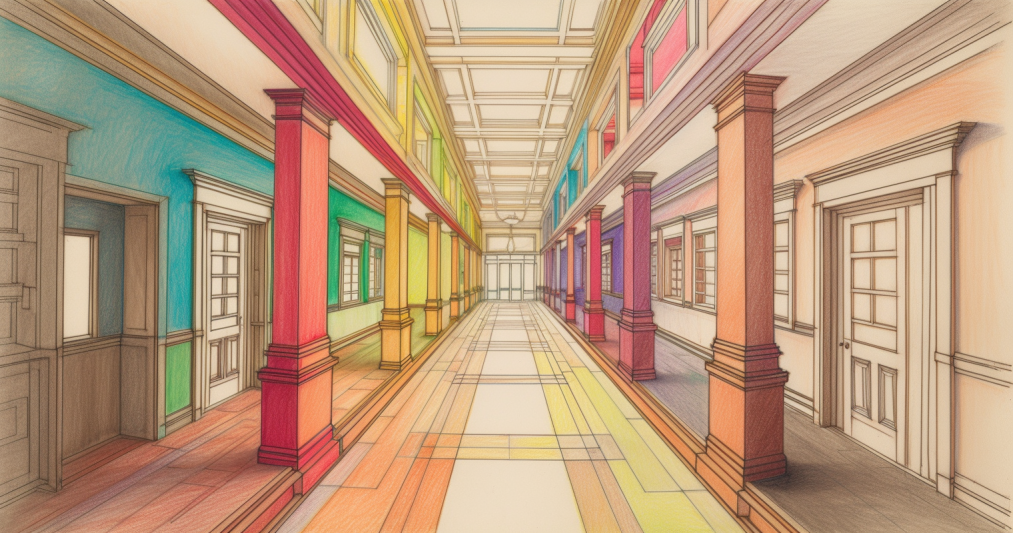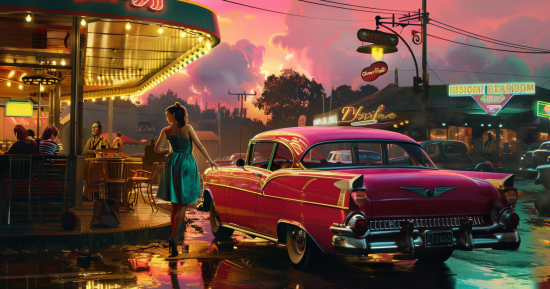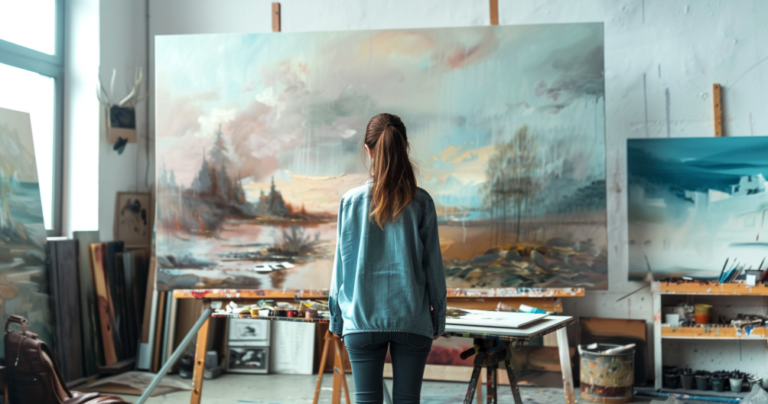Have you ever looked at a painting and marveled at how realistic it appears? The secret behind this illusion of depth and space is often linear perspective.
Linear perspective is a technique used in art to create the illusion of three-dimensional space on a two-dimensional surface by converging parallel lines at a single vanishing point on the horizon line.
Linear Perspective in Art
This clever artistic method was devised around 1415 by Italian Renaissance architect Filippo Brunelleschi. It revolutionized the way artists could represent depth and distance in their work, allowing for more realistic and immersive scenes.
When you understand linear perspective, you can better appreciate how artists create depth in their paintings and drawings. You’ll start to notice how objects appear smaller as they recede into the distance and how parallel lines seem to meet at a point far away.
This knowledge can also help you improve your own artistic skills, whether you’re a beginner or an experienced artist looking to enhance your work.
Understanding Linear Perspective

Historical Development
The concept of linear perspective emerged during the Renaissance.
Filippo Brunelleschi, an Italian architect, is credited with developing this system around 1415. His work laid the foundation for artists like Piero della Francesca and Leonardo da Vinci to refine and expand upon these techniques.
Early Renaissance painters used linear perspective to create more lifelike religious scenes. This revolutionary approach transformed the art world, allowing artists to accurately depict space and depth.
As the technique spread throughout Europe, it became a cornerstone of Western art. Its influence can be seen in paintings, architecture, and even stage design.
Basic Principles
Linear perspective relies on three key elements:
- Horizon line: An imaginary line representing eye level
- Vanishing point: The spot where parallel lines seem to converge
- Orthogonal: Lines that recede towards the vanishing point
To apply linear perspective, you’ll start by establishing your horizon line. Then, choose one or more vanishing points on this line.
Finally, orthogonal from the edges of objects are drawn toward these points.
This technique creates the illusion that objects become smaller and closer together as they recede into the distance.
It mimics how your eyes perceive depth in the real world.
Types of Linear Perspective
You can use different types of linear perspective depending on your subject and desired effect:
- One-point perspective: Ideal for scenes with a single focal point, like a long hallway or road
- Two-point perspective: Useful for depicting buildings or objects at an angle
- Three-point perspective: Best for extreme views, like looking up at tall structures or down from great heights
Each type adds complexity and realism to your artwork. You’ll learn which perspective works best for different subjects and compositions as you practice. Experiment with these techniques to enhance your art’s depth and spatial relationships. With practice, you can create convincing, three-dimensional scenes on a two-dimensional surface.
Application in Art

Linear perspective revolutionized artistic representation, allowing creators to depict three-dimensional space on a two-dimensional surface accurately. This technique enhanced realism and depth in paintings, drawings, and other visual arts.
Creating Depth and Realism
Linear perspective enables you to create the illusion of depth on a flat surface. By using vanishing points and converging lines, you can make objects appear to recede into the distance, mimicking how your eyes perceive the world.
You’ll need to establish a horizon line and vanishing points to achieve this effect. Objects closer to the viewer are drawn larger, while those farther away become progressively smaller. This technique allows you to create convincing spatial relationships between elements in your artwork.
It’s particularly effective for architectural scenes, landscapes, and interiors.
Techniques and Tools
When applying linear perspective, you’ll utilize several key components:
- Orthogonals (parallel lines)
- Vanishing point(s)
- Horizon line
These elements work together to construct a realistic scene. Tools like rulers and t-squares ensure precise line placement. A one-point perspective is ideal for scenes viewed head-on, while two-point and three-point perspectives offer more dynamic compositions. Each type has its unique applications and challenges. Practice with simple shapes and gradually progress to more complex scenes.
This will help you master the technique and apply it effectively in your artwork.
Influence on Art Styles

Linear perspective significantly impacted various art movements throughout history. During the Renaissance, artists like Filippo Brunelleschi pioneered its use, revolutionizing painting and architecture.
This technique became a cornerstone of realistic representation in Western art.
It influenced styles such as:
- Renaissance art
- Baroque painting
- Neoclassicism
- Photorealism
While some modern art movements deliberately broke away from a strict linear perspective, its principles continue to inform many contemporary artists’ work. You can see its ongoing influence in fields like graphic design, illustration, and 3D modeling, where accurate spatial representation remains crucial.
FAQ – What Is Linear Perspective in Art
What distinguishes linear perspective from natural perspective?
Linear perspective is a constructed system based on mathematical principles, while natural perspective refers to how we actually see the world.
Linear perspective uses straight lines and fixed vanishing points. Natural perspective accounts for the curvature of our vision and the movement of our eyes, resulting in a less rigid representation of space.
Could you explain the concept of linear perspective for a beginner in art?
Linear perspective is a technique that creates the illusion of depth on a flat surface. It mimics how objects appear smaller as they get farther away.
You start by establishing a horizon line and vanishing points. Then, you draw lines that converge at these points to create a sense of distance and space in your artwork.
How do artists create the illusion of depth using linear perspective in their drawings?
Artists create depth using three essential components: orthogonals (parallel lines), the horizon line, and vanishing points.
By drawing converging lines towards vanishing points, artists can make objects appear to recede into the distance.
Objects closer to the vanishing point are drawn smaller to enhance the illusion of depth.
What’s the difference between linear and atmospheric perspective?
Linear perspective uses lines and geometry to create depth, while atmospheric perspective relies on color and detail changes to suggest distance. In a linear perspective, objects appear smaller as they recede. Atmospheric perspective makes distant objects appear less distinct and bluer.
Which artist is credited with the development of linear perspective?
Filippo Brunelleschi, an Italian architect and engineer, is widely credited with developing linear perspective in the early 15th century.
His groundbreaking work laid the foundation for Renaissance artists to create more realistic and spatially accurate paintings.






